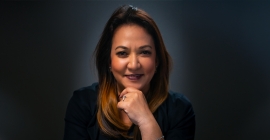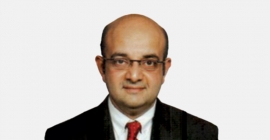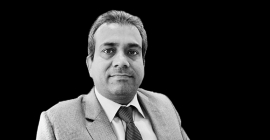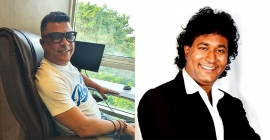‘Integration of OOH with other channels is increasing’
By Rajiv Raghunath - October 30, 2023
Stephanie Gutnik, Chief Strategy Officer, Billups talks about the OOH growth catalysts, DOOH trends, application of data science & tech for OOH planning, audience targeting, among others, in an interview with Rajiv Raghunath.
You have worked with some of the top adtech companies operating in the DOOH space before you took up your new role as CSO at Billups. Do you think the age of DOOH has truly arrived, globally? What will keep the DOOH growth rate ticking?
One of the reasons I am so passionate about working in OOH is because I believe in its impact and I enjoy rooting for the underdog as a result. The medium has been around for a long time. It’s stoic. People trust OOH; they find the messaging helpful and entertaining. For a brand, the creative possibilities are endless. While there have been many fantastic developments in the medium, from automation and programmatic to enhanced measurement capabilities that align OOH with other media, we are still waiting on advertisers at large to increase their OOH budgets. I believe we are on the precipice of this happening, and I will be satisfied with the work I have done when OOH spending moves from a single digit to double digit percentage of total ad spend.
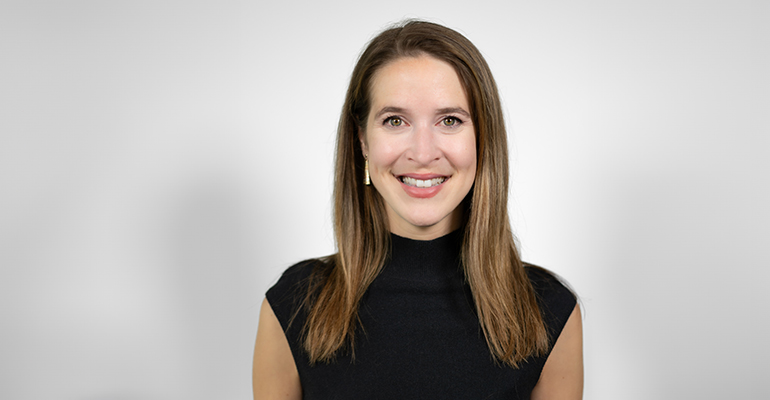
Billups is a forerunner in the application of data science and technology for empowering brands to unfurl smart OOH campaigns. Tell us more about Billups. What are the company’s differentiators in terms of its market offerings?
Billups is a global OOH managed services agency helping advertisers and agencies strengthen media performance through a patented analytics and measurement platform. Billups is the largest independent and privately-held company of its kind in North America and is reinventing OOH planning and placement to demonstrate how OOH works as a brand and performance channel. Billups leads the industry with a team of experts in OOH using patented targeting, accurate OOH measurement and an AI-powered recommendation engine.
With the recent acquisitions of TAC Media and OOH Labs, Billups holds a global presence in 15 countries across North America, Europe and Southeast Asia, further cementing its position at the forefront of OOH in the global media landscape.
How effectively is DOOH brand advertising complementing digital advertising? Are brands beginning to see more value in this integrated approach?
Brands such as Ally Financial, AirBNB and The North Face have been vocal about the need to address brand and performance marketing together, which is a fantastic development for OOH. For years, digital campaigns have put a focus on lower funnel performance marketing, vying for that last click to determine success. OOH should not be ruled out in performance marketing initiatives, as online conversions and sales can be measured as well. In addition, generating upper funnel engagement has profound impacts on lower funnel metrics. So, the integration of OOH with other channels is increasing - and rightfully so from a strategic standpoint.
Among various tech applications, Billups has an AI-powered recommendation engine. Are brands and agencies benefiting from such automation?
Several major clients are using our technology extensively. For instance, within the insurance sector, one client leverages our recommendations to create tens of thousands of annual plans that guarantee brand consistency in every location we suggest. In the beverage industry, another client uses our recommendation engine to craft intelligent pre-shop plans, effectively targeting consumers at the optimal moments and locations for increased product sales.
How effective is audience targeting in these times of media saturation and diminishing audience attention?
Media saturation and diminishing attention stem from clutter. Humans have a limited ability to process what is in our direct view and limited attention spans, both of which require us to focus. OOH does a beautiful job of cutting through the clutter by using large-format canvases and screens to provide information and entertainment to people in contexts where the messaging is useful and often readily actionable. Selecting OOH boards and screens based on location alone is powerful, and adding audience targeting enhances the ability to optimise efficiencies by over-indexing for desired viewers.
Effective audience targeting in OOH involves more than just demographics. It's crucial to consider the context as well. While demographics are important, they're only part of the equation for success. To achieve the best results, we must assess when the OOH ad plays during the consumer's journey and the environment it's in. Ask questions like: How many ads has the consumer seen that day? How many ads are competing for their attention at this moment? Does the ad's message align with their current needs? How well does the ad stand out in its surroundings? One advantage of OOH is that every unit has adjacent audiences that often respond as well as, or even better than, the target audience. This not only provides additional reach but also valuable insights about the target audiences.
How is Billups harnessing new data to understand the customer journey, and how the insights are being used for OOH?
We are not necessarily gathering new data. Instead, we focus on using existing data more intelligently and creating innovative approaches that prioritise privacy as our foremost concern in all our endeavours. This strategy ensures our readiness for the growing landscape of data privacy and protection regulations. It also reflects our commitment to respecting the privacy of the consumers who engage with our ads while maintaining the essential targeting and measurement capabilities necessary for the success of OOH advertising.
As the CSO, you plan to develop and execute Billups’ international product roadmap and GTM strategy to promote the adoption of pDOOH. Which are your focus markets? Would you be looking at emerging markets like India?
The most important element of bridging programmatic and DOOH is understanding when and how this form of activation makes sense for a campaign’s KPIs. This precedent applies globally. Given my experience, I am an advocate of programmatic DOOH in an omnichannel campaign. Programmatic platforms make DOOH feel more like other channels and thus easier to plan. However, it’s important that marketers using programmatic tools have the necessary expertise to ensure all aspects of the campaign (from budget to screen selection, creative to measurement) align with KPIs and are positioned for success based on best practices and learned experiences.

Stay on top of OOH media trends

